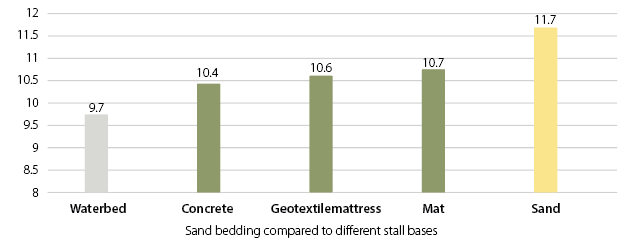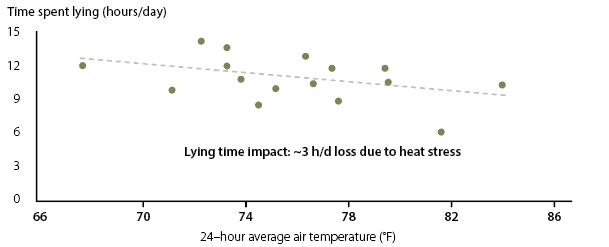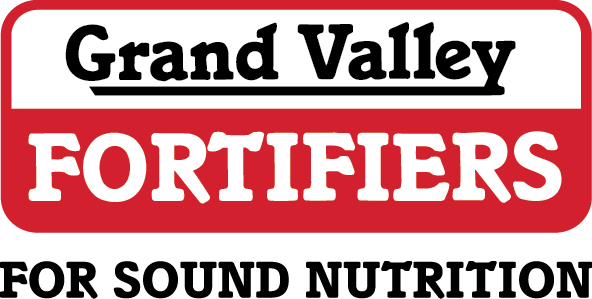By Jeff Keunen, M.Sc.,
Ruminant Production & Robot Improvement Specialist
Grand Valley Fortifiers
Cow Comfort 2024: Maintaining Social Trust Through Housing that Optimizes Welfare – Nigel Cook
Social trust is one of the 3 pillars of sustainability that helps producers and the public establish an understanding that the food they consume is safe and the animals that produce the food are well cared for. With more than 90% of the North American consumers looking to consume more milk, meat, and eggs from our animals, it is paramount that we maintain their trust in our food supply, or they will start to consume less. When we do not meet consumer expectations, trust erodes, consumption decreases, and change is invoked. This change may be farmer organization driven (educated and process driven) or may end up being consumer and retailer driven (emotion based and outcome driven) to establish standards for producers to meet and ensure consumers are confident in the food choices they are making.
As we look to the future in our dairy industry, we must recognize what shortcomings in animal welfare our facilities present and how we can work towards improving cattle welfare to not only increase the productive life of our animals, but also provide quality, nutritious food products that the consumer wants to enjoy. With the implementation of the updated Canadian Code of Practice and changes becoming required by 2027, we can look at our barns and facilities to keep cows healthy and injury free to maximize welfare.
The key components of cow comfort include providing cattle with shelter from climate extremes, access to feed and clean water, ability to walk and exercise, adequate sleep and optimized resting behaviour. Dr. Cook took a deeper dive into the topic of optimized resting behaviour, which can be described by the total lying time of cows, number of lying bouts and lying bout duration. When looking at the peer-reviewed scientific data, it is clear that deep loose bedding is best for cows. (Figure 1.) Deep bedded sand stalls increase lying time significantly over any other stall type, and results in lower incidences of lameness, hock, and knee lesions. Deep bedding provides cushion, traction, and support for the cow to facilitate rising and lying movements.
Bed Surfaces and Lying Time
(Solano et al., JDS 99:2086,2016; farms in Alberta, Ontario and Quebec)

Figure 1: the impact of bed surfaces on total lying time (hours/day)
Combining a good stall base with a properly designed stall divider loop is needed to properly index cows, keep them clean and free from injury from neighbouring cows. A well-designed stall will provide the cow appropriate resting space but will prevent them from defecating in the stall as the neck rail will encourage the cow to back up when they get up in the stall. Dr. Cook mentions that seeing some perching in deep bedded stalls is fine as this forces manure into the scrape alley. On the other hand, if a producer is using mats or waterbeds, we do not want to see perching, but rather the cow standing with all four feet off the cement and in the stall.
Heat abatement and providing adequate cooling for cows during periods of heat stress is another area of cow comfort that has been extensively studied. It is well known that as air temperature and thermal heat index (THI = temperature-humidity index) increase, cows lying time decreases by as much as 3 hours/day (Figure 2). More recently, it has been shown that the negative effects of heat stress on a dry cow not only negatively affect the cow’s health and milk production, but also her daughters and granddaughters future milk potential! Keeping cows cool while they are lying in their stalls is the key to alleviating the negative effects of heat stress. Cows that are eating or standing have some cooling already happening, but a cow that is lying down is warming herself. Thus, keeping air speed over the cows at lying height (0.5 m above the stall base) is the key to cooling cows properly. With the various styles of barn types built for dairy cows (natural ventilation, tunnel ventilation, cross ventilation, or combinations of these) the need for fans to keep cows cool is paramount. Providing air speed over cows at 1-2 m/s (200-400 ft/min) at lying height increased lying time even as THI increased and maintained body temperature through the increasing heat stressed environment. Milk yield was also maintained for these cooled cows rather than the dramatic decrease we often see from heat stressed dairy animals. Producers can map out their stalls in barn for air speed to make decisions on fan placements, fan angles and number of fans needed in the barn to properly cool the cows. Research has shown that box fans or basket fans have a significant advantage over the high-volume low speed fans for getting the desired air speed at stall level throughout the entirety of the barn. The use of baffles in cross ventilated barns has become common to increase air speed in this style barn and provide adequate coverage to all stalls in the barn.
Heat Stress Consequences: Behavioural

Figure 2: The Impact of air temperature on lying time
An achievable target for average resting time based on healthy, non-lame cows, housed in deep-bedded comfortable freestalls, TMR fed, spending >21 hr/day in the pen at 100% stocking rate, with a favourable resting microenvironment, is 11.5-12.5 hr/day, with mean lying bouts of about 1.2 hours. Producers should be aiming for this level of lying time by improving housing environment and supporting cow comfort.
Maximizing the value of the other commodity: Manure – Christine Brown
Manure has been shown to have long term benefits on soil health and crop yields, with dairy and beef farms having the most resilient soils due to both manure and perennial forages being a significant portion of the rotation. Dairy manure brings with it valuable sources of Nitrogen (N), Phosphorus (P) and Potassium (K) along with many micronutrients and organic matter that can replace purchased inputs for crop production. Valuing the manure in relation to todays’ input costs, 1.13 million imperial gallons of liquid dairy manure is worth $52,000 of N-P-K for crops.
How can we maximize the value of this on farm resource that is continually produced?
- Sample and test manure regularly. Sampling your manure will allow you to know the dry matter, total N, Ammonia N, total P & K, level of micronutrients (S, Ca, Mg, Mn, Zn, B), pH, Carbon: Nitrogen ratio, organic matter, and total salts. Knowing these nutrient levels combined with your soil samples can help you make informed decisions on applying manure to our fields.
- Follow the 4 R’s of manure application: Right Source, Right Rate, Right Time, Right Place. All these rules are important, but the correct timing of application will have the greatest impact on yield and soil properties. When applying manure on forages fields producers should be applying as soon as possible after harvest to minimize crop damage and improve yields.
Total Nitrogen in manure is comprised of organic N + ammonium + nitrate. Organic N is more slowly available to the plant over time, while ammonium is available immediately to the plant but can be easily lost before being used. Trying to time application to maximize N available for crops when it will be most needed is key to getting the biggest return of N from your manure. In addition to manure N, some commercial N will need to be purchased to maximize crop production. In order to maximize commercial N efficiency, producers should apply recommended N rates for crops and utilize N credits, consider injection/banding of N vs surface broadcasting (savings of 45% N at 25C; 7% at 15C), apply at correct time (side-dress vs ahead of planting) which can save 20% N, and use nitrogen inhibitors (up to 40% N savings depending on weather and Nitrogen type.
Manure adds complexity to fertilizer management and producers need to consider manure credits, nutrient availability and timing, and additional fertilizer needs for their crops. Testing manure will help you more precisely apply needed nutrients to your soils and crops and allow you to apply to fields that may have the highest need for nutrients and organic matter. 4 R management will provide you the highest value for your manure and will contribute to improving your soil health.
This article was written for the Spring 2024 Central & Atlantic Dairy Grist. To read the whole Dairy Grist, click the button below.

